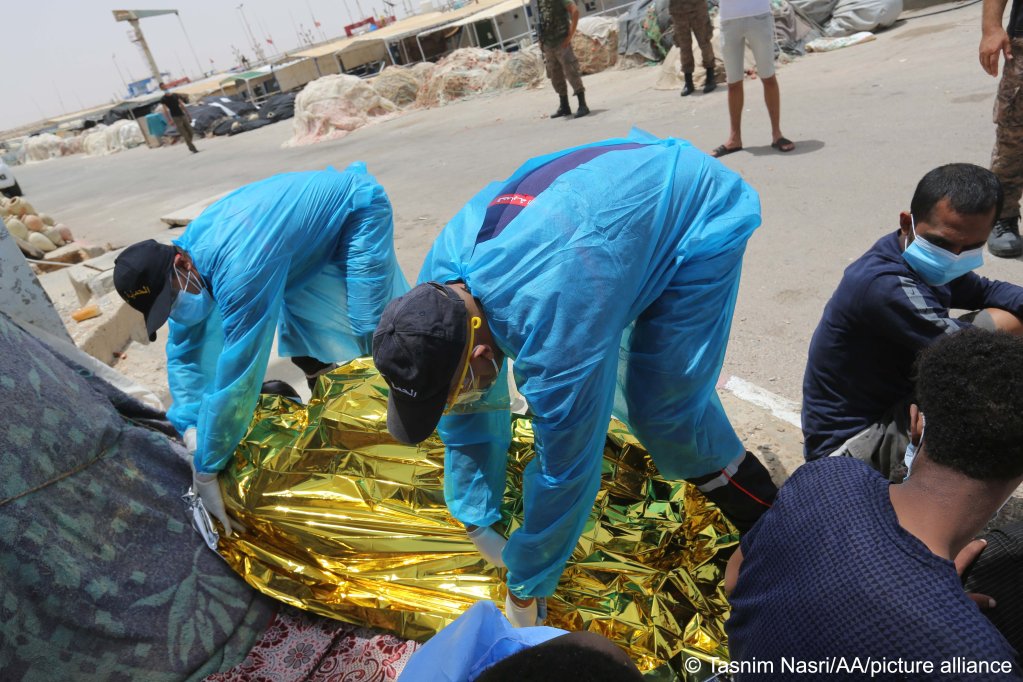Tunisian authorities recently recovered two unidentified bodies, believed to be migrants, on the country’s eastern coast. At least one person is still missing, while 28 others were rescued from a sinking boat. The rescue operation took place after the boat, which reportedly set sail from Teboulba, around 180 kilometers south of the capital Tunis, ran into trouble.
Local media outlets, including The New Arab, reported that most of the rescued migrants were Tunisian nationals. While it is not uncommon for bodies to wash up on Tunisia’s shores, this recent tragedy highlights the ongoing dangers faced by migrants attempting to cross the Mediterranean. In late October, authorities recovered at least 15 bodies along Tunisia’s eastern coastline near Monastir. The Interior Ministry of Tunisia stated that around 341 bodies have been retrieved from the country’s waters this year alone.
According to the Tunisian human rights organization FTDES, more than 1,300 people have either died or gone missing while trying to reach Italy from Tunisia. The UN Migration Agency’s Missing Migrants Project reported that at least 1,504 people have died on the Central Mediterranean route this year, with the latest incident recorded on November 30. However, due to the lack of monitoring for boats attempting to depart, the actual number of missing and deceased could be far higher.
The area where the bodies were found is roughly 100 kilometers from Lampedusa, an Italian island often reached by migrants crossing from Tunisia. Survivors of the latest sinking claimed their boat encountered trouble off the coast of Mahdia, not long after leaving Teboulba.
In the aftermath of previous incidents, the authorities have struggled to identify bodies, as decomposition often complicates identification. In one such case in October, 15 bodies were found along Tunisia’s coast, and identification was hindered by the state of the remains.
Over the past year, Tunisia has become the main departure point for migrants seeking to reach Europe, surpassing Libya. However, various agreements between the European Union (EU) and Tunisia, particularly with Italy’s involvement, have led to greater efforts by Tunisia’s national guard to intercept boats before they can reach Europe.
There have been increasing reports of violence against migrants in Tunisia, particularly those from sub-Saharan Africa. Allegations of deportations to desert areas, as well as incidents of violence, torture, and rape, are becoming more common, although Tunisian authorities deny these claims. Earlier this year, the UN discovered a mass grave of migrants at the Libya-Tunisia border.
The EU’s recent partnership with Tunisia on migration management has also come under scrutiny. A deal, worth millions of euros, aims to assist Tunisia with controlling migration and has raised concerns regarding transparency and the treatment of migrants. The EU Ombudsman criticized the EU for a lack of openness about how it negotiated the deal, which includes trade, investment, and development aspects. Although the EU claims to prioritize transparency, the details of the agreement remain unclear.
The EU has also faced criticism for allegedly funding Tunisian forces accused of severe human rights violations, including mass rape, a charge which has been denied by the EU. The ongoing situation in Tunisia highlights the complex and often controversial dynamics of migration management in the Mediterranean.

